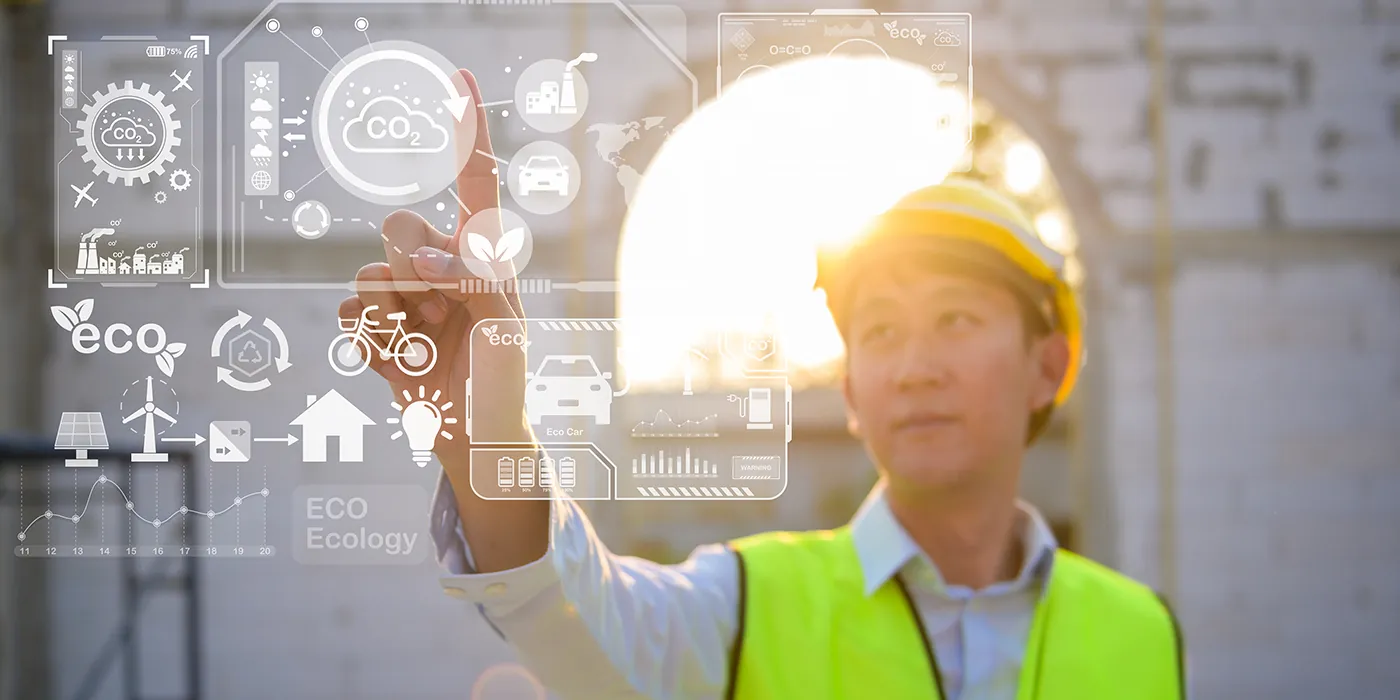How RevGen Set Up Our Internal AI Governance
How is a data & AI company handling their own AI Governance? This article gives a peek behind the curtain into our own processes and guidelines.
Read More
IoT and analytics are revolutionizing construction safety—reducing injuries, cutting downtime, and ensuring regulatory compliance through wearable devices, predictive maintenance, and real-time monitoring

Author: Macaulan Chiaramonte
The construction industry is experiencing a technological revolution in safety management. The integration of the Internet of Things (IoT) and advanced analytics is paving the way for safer, smarter construction sites by providing real-time data, predictive insights, and rapid response capabilities. As construction firms prioritize worker protection and operational excellence, these digital tools are becoming essential components of comprehensive safety strategies.
So how is IoT transforming construction safety? Key areas including wearable technology, predictive maintenance, site security, and environmental monitoring.
The shift toward digital transformation in construction is driven by the need to reduce accidents and improve operational efficiency. IoT devices such as wearables, sensors, and connected machinery are increasingly deployed to monitor various aspects of the jobsite. These technologies gather data continuously, which is then analyzed to predict potential hazards and enable proactive safety measures.
Key benefits of IoT and analytics in construction include:
Recent studies show that companies employing IoT safety solutions have seen reductions in workplace injuries by as much as 10–20%. This compelling ROI is driving further adoption across the industry.
Wearable devices are among the most impactful IoT applications in construction safety. They not only monitor worker movements but also track health metrics to provide an early warning system for various emergencies. Some key features are:
For instance, Gilbane Building Company uses the Triax Spot‑r system to monitor worker safety. When a fall is detected, an alert is sent immediately to on-site supervisors, ensuring a quick emergency response. The aggregated data from these devices also provides insights into hazardous trends, allowing companies to adjust work practices and training programs accordingly.
Equipment failure is a major safety risk on construction sites. Heavy machinery such as cranes, generators, and excavators can malfunction unexpectedly, leading to accidents that may result in severe injuries or even fatalities. A reduction in risk is crucial for both workers and companies, and while regularly scheduled maintenance is still critical, the addition of predictive maintenance improves equipment uptime and decreases the likelihood of accidents. This is accomplished through:
For example, Caterpillar has implemented sensor-based monitoring systems on its machinery. This predictive maintenance approach has cut unplanned downtime by up to 50% and extended the lifespan of equipment by identifying issues early. By preventing sudden equipment failures, companies not only enhance safety but also improve operational efficiency, leading to significant cost savings.
Beyond worker and equipment safety, site security is crucial in preventing unauthorized access and theft. IoT devices, combined with artificial intelligence (AI), are transforming how construction sites are secured. A few examples of this are:
These advanced security measures not only prevent theft but also reduce risks associated with unauthorized personnel entering hazardous areas. Many sites now integrate such systems into their overall safety protocols, ensuring comprehensive monitoring and rapid response capabilities.
Environmental conditions on construction sites can change rapidly, posing significant risks to both workers and equipment. IoT-based environmental monitoring systems help manage these risks by providing continuous, real-time data on weather and site conditions. Some IoT-enabled monitoring systems include:
For example, Pillar Technologies offers sensor networks that track both environmental conditions and structural integrity. These systems have proven effective in issuing early warnings during severe weather conditions, thereby preventing accidents before they occur. Integrating environmental data with worker safety metrics creates a holistic view of jobsite conditions, enabling more informed decision-making.
The integration of IoT and analytics in construction is still evolving. As technology advances, we can expect even greater levels of precision in hazard detection and response. Key trends likely to shape the future include:
While the implementation of IoT devices provides valuable safety monitoring capabilities, the true power lies in what organizations can do with the collected data. The wealth of information generated by these interconnected systems creates unprecedented opportunities for advanced analytics, reporting, business intelligence, and artificial intelligence.
IoT sensors across construction sites generate massive volumes of data points daily, from worker movements to equipment performance metrics. This raw data becomes transformative when properly analyzed:
The value of IoT safety data extends well beyond the immediate safety applications:
As construction firms expand their IoT implementations, their data analytics needs will evolve:
The flexibility of modern analytics platforms means construction firms can start with basic reporting and gradually expand their capabilities, extracting greater value from their IoT investments as their comfort with the technology grows.
We’d love to help transform your IoT and safety data into action. In fact, it’s something we specialize in! Look at some of our success stories in data analytics and AI:
IoT and analytics are revolutionizing construction safety by enabling real-time monitoring, predictive maintenance, and comprehensive environmental oversight. However, the most significant advantage comes from the ability to analyze and leverage the vast amounts of data these systems generate. By transforming raw data into actionable insights, construction companies can not only protect their workers but also enhance operational efficiency and reduce costs.
Organizations that partner with experienced data analytics providers can maximize the return on their IoT investments, turning safety monitoring systems into comprehensive business intelligence tools. The journey toward smarter, safer construction sites is well underway, and firms that embrace both IoT implementation and sophisticated data analytics will be best positioned to meet the challenges of tomorrow’s construction landscape.
Contact RevGen today to unlock the potential of IoT-enabled safety analytics for your business.

Get the latest updates and Insights from RevGen delivered straight to your inbox.